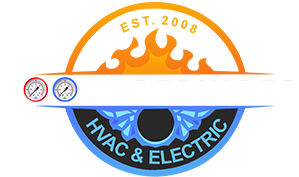Interpreting the Sound Ratings of a Unit

Common Sounds
Decibel (dB) Comparisons
How to Interpret Sound Ratings
Generally, sound ratings are understood in correlation with the decibel (dB) given to the HVAC equipment. The quiet level range of 40-50 dB is suitable for the residential areas, that is similar to the sound of a refrigerator. Moderate by any standards are the sounds whose level ranges between 50-60 dB, which is roughly similar to the noise people produce while chatting.
Levels above 60 dB could be recognized easily and may bring inconvenience, particularly in comparatively calm environments. When selecting the system, it is essential to look at the noise level to make sure that it is less than the spaces it shall occupy to improve comfort. Alcohol and drugs D When choosing soundproofing products, almost always, levels referred to as dB ratings should be lower.


Factors Affecting Sound Ratings
Some of the things that influence sound ratings include; the type of HVAC system, the size of the system, and design of the system. This noise depends on the efficiency of the assembly components such as fan, compressor, and the motor. Further, the location of the installation, the flow direction and patterns and the insulation type and characteristics play a role in the amount of sound that is transferred. But well performed and correctly lubricated will reduce the noises to an appropriate level with time after frequent servicing.
| SOUND | NOISE LEVEL (dBA) | EFFECT |
|---|---|---|
| Jet Engines (Near) | 140 | |
| Shotgun Firing | 130 | |
| Jet Takeoff (100-200 Ft.) | 130 | |
| Rock Concert (Varies) | 110-140 | Threshold of pain (125 dB) |
| Oxygen Torch | 121 | |
| Disco/Boom Box | 120 | Threshold of sensation (120 dB) |
| Thunderclap (Near) | 120 | |
| Stereo (Over 100 Watts) | 110-125 | |
| Symphony Orchestra | 110 | |
| Power Saw (Chain Saw) | 110 | Regular exposure of more than 1 minute risks permanent hearing loss (over 100 dB) |
| Jackhammer | 110 | |
| Snowmobile | 105 | |
| Jet Fly-over (1000 Ft.) | 103 | |
| Electric Furnace Area | 100 | |
| Garbage Truck/Cement Mixer | 100 | No more than 15 minutes of unprotected exposure recommended (90-100 dB) |
| Farm Tractor | 98 | |
| Newspaper Press | 97 | |
| Subway, Motorcycle (25 Ft) | 88 | Very annoying |
| Lawnmower, Food Blender | 85-90 | Level at which hearing damage begins after 8 hours (85dB) |
| Recreational Vehicles, TV | 70-90 | |
| Diesel Truck (40 Mph, 50 Ft.) | 84 | |
| Average City Traffic Noise | 80 | |
| Garbage Disposal | 80 | Annoying; interferes with conversation; constant exposure may cause damage |
| Washing Machine | 78 | |
| Dishwasher | 75 | |
| Vacuum Cleaner | 70 | |
| Hair Dryer | 70 | Intrusive; interferes with telephone conversation |
| Normal Conversation | 50-65 | |
| Quiet Office | 50-60 | Comfortable (under 60 dB) |
| Refrigerator Humming | 40 | |
| Whisper | 30 | Very quiet |
| Broadcasting Studio | 30 | |
| Rustling Leaves | 20 | Just audible |
| Normal Breathing | 10 | |
| 0 | Threshold of normal hearing (1000-4000 Hz) |
Since different frequency sounds are not detected in the same manner by human ear, special weighting or attenuating filters are provided in the circuits of sound level meters. A noise level meter provides current measurement of the noise in the environment but does not measure how long the exposure will last. To measure the amount of noise a person is exposed to over a period of time, a “dosimeter~ or an integrated sound level meter must be used. Sources for the above include the American Medical Association and the Canadian Hearing Society of Ontario. The table has been borrowed from National Institute on Deafness & Other Communication Disorders, National Institutes of Health, Bethesda, Maryland 20892. January 1990.

